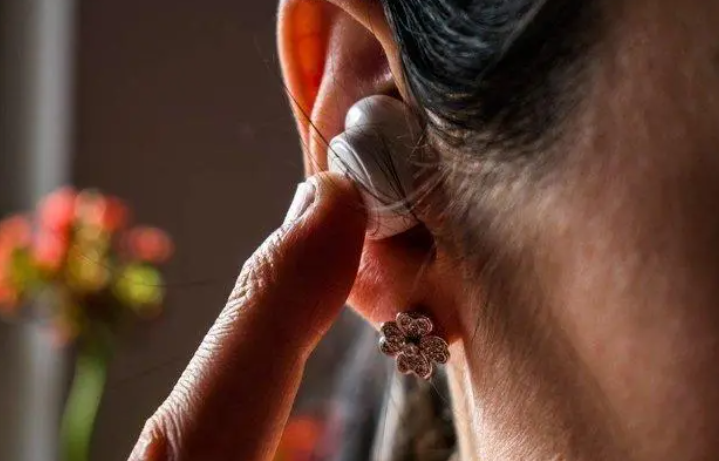
When you dive with your island-loving friend Amway, they always say no, mostly because their ears hurt when they swim down the ocean. Don't worry too much about this, because even diving will teach you an important skill called "ear pressure balance." (But no more than someone did ear pressure balance also had little effect)
So let's take a look at what is diving ear pressure injury, how it is caused, and how to prevent it?
As early as 1820, relevant scholars first described the symptoms of earache during diving, and after 1873, the concept of middle ear injury related to air pressure was proposed.
The most common ear injury in diving is bleeding and rupture of the eardrum, and dislocation of the ossicles is also possible.
Most of the conductive hearing loss can be recovered by itself.
Damage to the inner ear caused by diving can cause severe permanent sensorineural hearing loss.
Diving and middle ear barotraumaThe first thing you need to understand is an anatomical structure called the eustachian tube, which connects the tympanum with the nasopharynx.
Under normal circumstances, the eustachian tube is closed.
The tympanic air pressure is adjusted by opening the mouth, swallowing, yawning, singing, and blowing the nose.
During diving descent, the external pressure continues to rise, higher than the pressure inside the drum. Due to the absorption of the mucous membrane surface in the eustachian tube, when swallowing, yawning and blowing can not make the gas enter the tympanic cavity, the tympanic cavity is in a relatively negative pressure state, resulting in tympanic membrane invagination.
The tympanic membrane has the function of cushioning and compensating for the pressure changes inside and outside the middle ear. When the compensatory capacity is exceeded, the tympanic membrane will become congested, and in severe cases, the tympanic membrane will rupture and even dislocation of the auditory ossis.
During diving ascent, the pressure in the tympanic chamber is higher than the external pressure. If the pressure difference reaches 20~30mmHg, the gas can open the valve near the isthmus of the eustachian tube and enter the pharynx, so that the internal and external pressure can reach balance, so that the middle ear barotrauma is less likely to occur during diving ascent.
Diving and inner ear barotrauma
Air pressure injuries to the inner ear caused by diving include exolymphatic fistula and inner ear decompression sickness.
- Peripheral lymphatic fistula
A large difference between the pressure of the lymphatic gland and the middle ear can lead to a lymphatic fistula outside the cochlear window or vestibular window. When the diver descends, the external pressure is greater than the middle ear pressure, the diver feels the ear stuffy, swallowing or blowing to open the eustachian tube to balance the air pressure inside and outside the tympanum.
When the external pressure is 90mmHg higher than the tympanic pressure, the high pressure presses the eustachian tube, and when Valsalva is blown, the external gas not only cannot enter the tympanic cavity, but also causes the cerebrospinal fluid pressure to rise, which can cause the rupture of the window membrane to the tympanic cavity, resulting in sensorineural hearing loss.
When the diver recovers from the sea floor, the pressure of the middle ear is greater than the external pressure. When the Valsalva blowing is performed vigorously, the pressure of the middle ear suddenly increases and presses the round window membrane, causing it to rupture in the direction of the tympanic stage or the soleplate fracture in the direction of the atrium stage, causing sensorineural hearing loss.
In the process of descent and ascent, pressure interaction and pressure wave propagation lead to the rupture of basement membrane, vestibular membrane, balloon, elliptic sac and membranous semicircular canal, resulting in extensive and lasting vestibular function damage.
- Inner ear decompression sickness
Inner ear decompression sickness is the destruction of the fine membranous labyrinth structure by nitrogen bubbles released from the blood stream and tissues during prolonged diving.
Most divers breathe compressed air containing oxygen and nitrogen underwater, and the deeper you dive, the higher the partial pressure of these gases in your tissues.
Oxygen is involved in metabolism during diving, while nitrogen is not metabolized, but absorbed by the body's tissues. When it rises quickly out of the water, the partial pressure of nitrogen decreases, and nitrogen becomes a bubble dispersed in the blood stream and other tissues, and the light is manifested as fatigue, joint muscle pain. In severe cases, the lungs, inner ear and central nervous system are damaged.
In the inner ear, these bubbles can mechanically rupture the membranous structure of the labyrinth or cause blockage of the labyrinthine artery, causing sensorineural hearing loss.

